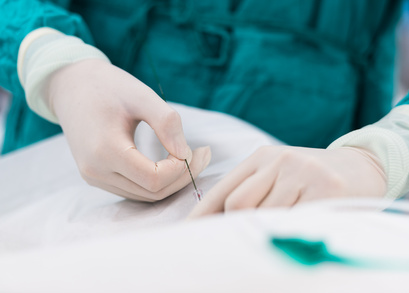Original Title: Percutaneous Transvenous Transseptal Transcatheter Valve Implantation in Failed Bioprosthetic Mitral Valves, Ring Annuloplasty, and Severe Mitral Annular Calcification.
Reference: Eleid MF et al. JACC Cardiovasc Interv. 2016 Jun 13;9(11):1161-74.
Courtesy of Dr. Agustín Vecchia.
 Transfemoral percutaneous transvenous mitral valve implantation is a promising technique and, despite the fact that no devices have been made especially for this purpose, more and more communications are made with devices originally designed to replace the aortic valve.
Transfemoral percutaneous transvenous mitral valve implantation is a promising technique and, despite the fact that no devices have been made especially for this purpose, more and more communications are made with devices originally designed to replace the aortic valve.
The present study includes patients with a history of mitral valve replacement (MVR – 33 patients), ring annuloplasty, (9 patients) or severe mitral annular calcification (MAC – 6 patients) classified as high risk for open reintervention.
STS score was 13.2 ± 7.4 with a mean age of 76 ± 11 years. All patients received the Edwards Sapien XT and Sapien 3 valves.
Procedure was successful in:
- 42 of 48 patients (88%) in the overall group.
- 31 of 33 patients with prior MVR (94%)
- 11 of 15 patients with prior mitral annuloplasty and MAC (73%).
Mean transvalvular gradient was 6 ± 2.5 mmHg. Survival free of death or cardiovascular surgery was 85% in the overall group and 91% in patients with a MVR history. As for procedural complications, there were:
Ventricular perforations: 3 (6%)
Device embolization: 3 (6%)
Emergency surgery: 4 (8%)
Major bleeding: 4 (8%)
Conclusions
The authors concluded that Transfemoral percutaneous transvenous mitral valve implantation in this particular group of patients is safe, effective and is associated with fast evolution in terms of hemodynamics, short hospital stay and functional improvement of patients.
Editorial Comment
For years, we have read reports on cases showing some cases of transfemoral percutaneous transvenous mitral valve implantation is feasible. This is the largest series of patients assessing the feasibility of Edwards Sapien valves in mitral position in patients with failed bioprosthesis, ring annuloplasty, and calcific mitral stenosis.
The procedure showed a high rate of primary success in the series of patients with prior bioprosthesis and a somewhat lower rate with the rest of patients. Complications were acceptable, considering age and status of patients, and learning curve.
One of the factors we should note is that since the introduction of the Safari guidewire (double curved anti-trauma design) there have been no cases of LV injury. Another aspect worth noting is that half of patients (52%) were discharged a few days after procedure, which gives us an idea of its minimal invasive character. Valve migration to the left atrium was observed in two of the nine patients with prior annuloplasty, which suggests special precautions should be taken with this subgroup.
Courtesy of Dr. Agustín Vecchia. Hospital Alemán, Buenos Aires, Argentina.
Your opinion matters to us. You are most welcome to leave your comment, reflection, question or any ideas down below.





